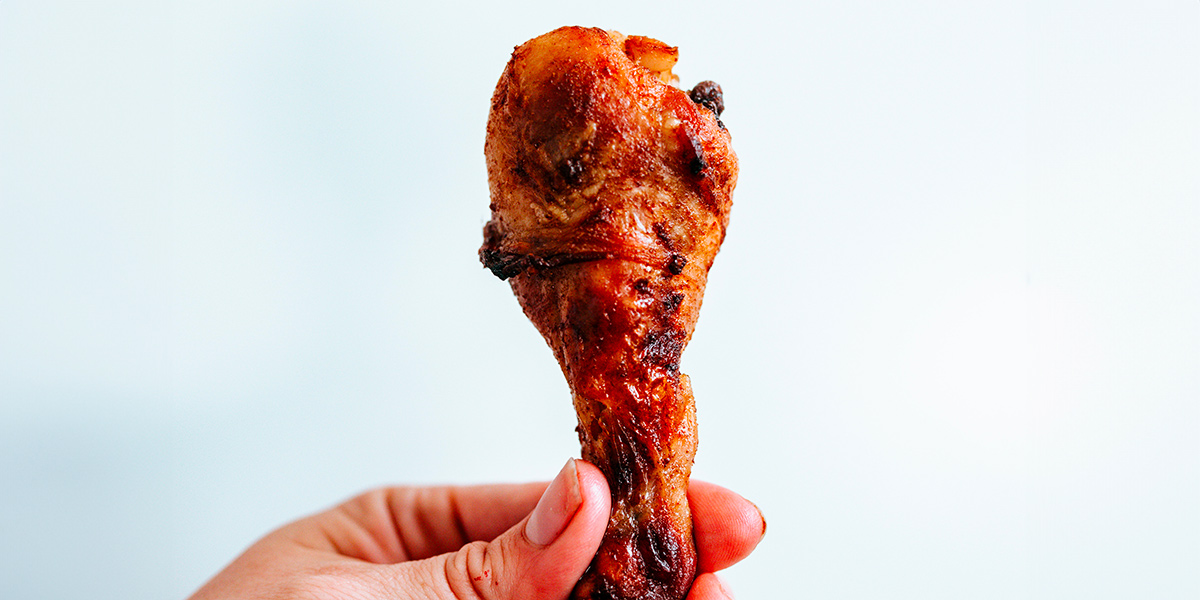It is not true that the knee joint in birds is backwards: it has to do with their anatomy, which is not always intuitive
There are times when roasted chicken can be divisive: breast or thigh? There are those who prefer the former, which is easier to eat and without bones, and there are those who prefer the latter, which is usually less dry and has a thicker layer of skin around it. Those who belong to this second category are often convinced that they have a real leg on their plate, after all everyone calls it, but in reality they are eating a “calf”.
The confusion arises from unfamiliarity with bird anatomy, from the fact that everyone – even butchers – often calls the part of the animal that is not a “thigh”, and from the widespread belief that chickens and the like have a knee joint unlike ours and, in general, compared to mammals.
The lower extremities of birds vary greatly depending on the species, but they still retain common characteristics that are also found in chickens (Gallus gallus domestica). They are digital animals: they use their phalanges, the bones that form their fingers, as their only point of support (dogs, cats and other animals are also digital). Therefore, they are distinguished from plants: they are animals that walk resting entirely on the soles of their feet, as do humans and bears, for example.
When we walk on tiptoe, we are, to some extent, imitating the progression of the toes and keeping the metatarsals and tarsus, the group of bones between the phalanx and ankle, elevated. Chickens have always walked this way and do not actually have a wrist, because during their evolution, this fused with the metatarsus to form a single, relatively elongated bone which is often mistakenly identified as the equivalent of our calf (tibia and fibula). . In fact, it is more correct to imagine it as an extension of the foot, which always remains elevated due to the way birds walk.
The lower limb of a bird compared to a human foot
Continuing from the claw upwards, at the tarsal end of the metatarsus is the ankle joint, which is anatomically different from ours, but oriented in the same way: it flexes just as it does when we flex our feet upwards. The ankle is the most visible joint in the lower limbs of birds, because it is not covered with feathers, and since the shape of the tarsus is misleading, many are convinced that they are observing a bird’s knee and from this draw the (incorrect) conclusion that these animals have the opposite expression compared to us. But, in reality, this is an ankle, not a knee, and therefore it is oriented in the normal direction.
The confusion between the ankle and the knee in birds has consequences for the rest of the understanding of the anatomy of the lower extremities of these animals and leads us to the common misconception with which we started: the thigh that is not a thigh. What we usually call in this way is in fact the equivalent of a “calf” in other animals, and the evidence for this is that the bone of which it is composed is not the femur, but the tibia, that is, the fusion of part of the tarsus (and then again part of the claw bone) with the tibia. . This part is by no means a thigh, but is always present in the next part from bottom to top.
The tibial portion ends at the actual knee, and is often hidden by feathers and so less noticeable that it is not often taken into account when we think of what a chicken looks like. Behind the knee is the femur, where we finally find the true thigh with the typical muscles of that anatomical part.
(Saikiran Kesari on Unsplash)
Sometimes, causing some additional confusion is the habit of distinguishing between “upper thigh” and “fusiform”: the former refers to the portion of the femur, while the latter refers to the portion in which the tibia lies. While in this way the latter is not named after another anatomical part, the word “upper thigh” can be misleading, because it seems to suggest there is another piece of the thigh, when in fact it is that same piece that it should be. Thigh. A dictionary search can lead to further confusion, as evidenced by the definition of upper thigh New Di Mauro: “Chicken, turkey, and similar meat pieces. Which includes the upper part of the thigh.”
Even emojis don’t help clear your mind, at least on different operating systems like iPhones.
(apple)
As is often the case, bird anatomy seems special to us because it differs from our own, which we often use as a model and by which we tend to define what is “normal” and what is not. Its development began in the Jurassic period, starting with the dinosaurs, when no one had yet asked the question between the chest or the thigh.

“Internet trailblazer. Travelaholic. Passionate social media evangelist. Tv advocate.”







More Stories
Will we send a text message from the moon? What we know about NASA's new project
There is a way (and it's the only way) to exceed the speed of light: here's what it is
Traveling to the end of time: What will happen in the future of the universe! Watch the video